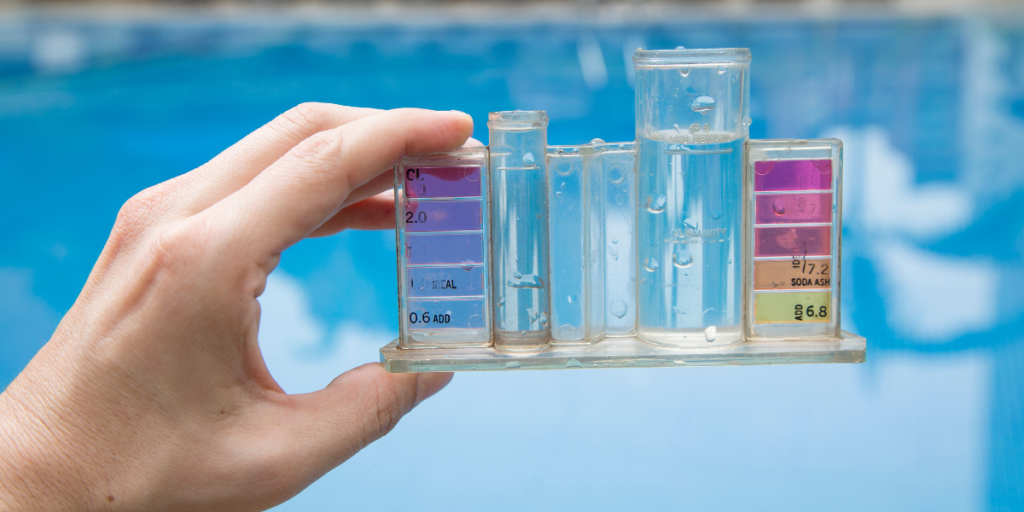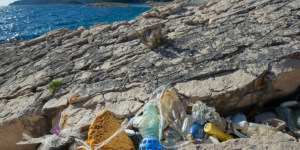Exploring the Impact of Ocean Acidification on Coral Reefs and Marine Ecosystems
You may not realize it, but changes in ocean acidity have a significant impact on coral reefs and other marine habitats. As carbon dioxide is absorbed by the ocean, it reacts with seawater to increase acidity levels, making it more difficult for marine organisms to build and maintain their shells or skeletons. This process is known as ocean acidification and has become a growing concern for scientists studying the health of our oceans.
Coral reefs are particularly vulnerable to ocean acidification as they rely on calcium carbonate to build their structures. When acidity levels rise, the ability of corals to absorb this mineral is limited, leading to weakened structures that are more susceptible to damage from storms or disease.
But coral reefs are not alone in feeling the effects of changing ocean chemistry – other marine habitats such as kelp forests and seagrass beds also rely on healthy pH levels for growth and survival.
In this article, we will explore how changes in ocean acidity affect these vital ecosystems and what can be done to protect them.
Key Takeaways
- Ocean acidification has a significant impact on coral reefs and marine life, as well as seagrass beds and kelp forests.
- Government intervention is necessary to regulate carbon emissions and promote sustainable practices among businesses and individuals.
- Developing more resilient coral species and creating artificial reefs are potential solutions to mitigate the effects of ocean acidification.
- Public advocacy plays a crucial role in protecting oceans, and collective effort is required to address the underlying causes of ocean acidification.

Understanding Ocean Acidification
You’ll have a better grasp of the impact of ocean acidity on coral reefs and other marine habitats once you understand how ocean acidification works.
The carbon cycle plays a crucial role in this process as it involves the exchange of carbon between land, atmosphere, and oceans. When carbon dioxide (CO2) is released into the atmosphere through human activities such as burning fossil fuels, some of it gets absorbed by the oceans. This leads to an increase in dissolved CO2 levels in seawater, which triggers chemical reactions that lower its pH level.
As seawater becomes more acidic due to increased CO2 concentrations, it can dissolve calcium carbonate minerals essential for coral reef formation. This not only affects corals but also other marine organisms that rely on these structures for shelter and food.
Furthermore, higher acidity levels can cause physiological changes in marine organisms such as reduced growth rates and weakened immune systems.
Overall, understanding ocean acidification is crucial to protect our valuable coral reefs and preserve the diverse marine ecosystems they support.
Impacts on Coral Reefs
The deteriorating conditions of the ocean’s ecosystem have left coral reefs vulnerable, like a delicate flower in a raging storm. One of the most significant impacts on coral reefs is coral bleaching. This happens when the ocean becomes too acidic, causing corals to expel their colorful algae symbionts, leaving them white and vulnerable to disease. Coral bleaching can lead to an ecosystem collapse since corals provide habitat for many fish species that rely on them for food and shelter.
Here are four ways that ocean acidification affects coral reefs:
- Decreased calcification: Corals need calcium carbonate to build their skeletons, but increased acidity makes it harder for them to do so.
- Reduced growth: Corals grow more slowly in acidic waters.
- Increased predation: Acidic water can affect the behavior of some fish predators who rely on sound cues to find prey, making it easier for them to find and eat small reef organisms.
- Reduced biodiversity: Acidification can cause shifts in species composition and decrease overall diversity within reef communities.
Overall, the impacts of ocean acidification on coral reefs are alarming and require immediate attention from policymakers and individuals alike. Without action, we risk losing these vital ecosystems that support countless marine species and provide numerous benefits to humans as well.
Effects on Other Marine Habitats
Ocean acidification also impacts a variety of marine habitats beyond coral reefs, such as seagrass beds and kelp forests. Seagrass beds are home to many species of fish and sea turtles, which rely on these habitats for food and shelter. As ocean acidity increases, the pH levels in the water make it difficult for these organisms to survive and thrive.
Additionally, seagrass beds provide important ecosystem services such as carbon storage and nutrient cycling. These services are crucial for maintaining overall marine biodiversity. Kelp forests serve as another important habitat that is vulnerable to ocean acidification. Kelp provides food and shelter for a variety of marine animals including sea urchins, crabs, and fish.
However, research has shown that increasing acidity levels can weaken kelp’s structural integrity, making it more susceptible to damage from storms or other environmental stressors. This can have a cascading effect on the entire ecosystem by altering food webs and ultimately impacting marine biodiversity.
It is clear that the effects of ocean acidification extend far beyond coral reefs and pose significant threats to numerous marine habitats, with implications for both ecological health and human well-being through the loss of ecosystem services such as fisheries production or coastal protection from storm surges.
Broader Implications
With the far-reaching consequences of ocean acidification, it’s crucial for us to understand how this issue will impact our planet and its inhabitants. Beyond coral reefs and other marine habitats, changes in ocean acidity can have broader implications on entire ecosystems.
Ecological cascades are a prime example. These are events where one species’ decline affects the abundance of others down the food chain. Ocean acidification could lead to a decrease in shellfish populations, which would have a ripple effect on their predators like crabs and fish.
This could ultimately affect human food security as well since shellfish are an important source of protein for many coastal communities around the world. As such, it’s important that we continue to study and monitor how ocean acidification is affecting not just coral reefs but also the broader marine ecosystem.
Taking Action
To take action against ocean acidification, you need to implement mitigation strategies. These strategies can include reducing carbon dioxide emissions from burning fossil fuels and increasing the use of renewable energy sources.
Restoration efforts are also important to help rebuild damaged marine habitats like coral reefs. Additionally, policy and advocacy play a crucial role in promoting sustainable practices and protecting vulnerable ecosystems from harm caused by ocean acidification.
Mitigation Strategies
You can help protect coral reefs and other marine habitats by supporting businesses that practice sustainable fishing and reducing your carbon footprint. Sustainable fishing practices include using methods that minimize damage to the habitat, avoiding overfishing, and protecting vulnerable species.
Additionally, reducing your carbon footprint can help mitigate ocean acidification by decreasing the amount of carbon dioxide that is released into the atmosphere. One way to do this is to support alternative energy sources like solar or wind power. These forms of energy do not release greenhouse gases into the atmosphere, which helps slow down ocean acidification.
Another strategy for mitigating ocean acidification is through carbon capture technology, which involves capturing and storing excess carbon dioxide emissions before they are released into the atmosphere. By supporting these types of initiatives and making conscious choices in our daily lives, we can all contribute towards protecting coral reefs and other marine habitats from the harmful effects of ocean acidification.

Restoration Efforts
If we support restoration efforts, we can help bring back damaged ocean ecosystems and give them a chance to thrive once again. One method of ecological engineering that has shown promise in restoring coral reefs is coral gardening. This involves collecting healthy fragments of coral, growing them in nurseries until they are large enough to be transplanted onto damaged reefs. The transplanted corals then grow and reproduce, helping to rebuild the reef ecosystem.
However, restoration efforts must also address the underlying causes of damage to marine habitats, such as ocean acidification. While restoration projects can provide short-term relief for damaged ecosystems, it’s important to also implement long-term solutions that reduce carbon emissions and mitigate the effects of climate change on our oceans.
By supporting both restoration and mitigation efforts, we can work towards a healthier future for our planet’s oceans and all the life within them.
Policy and Advocacy
Advocating for stronger policies that address the root causes of ocean ecosystem damage, such as reducing carbon emissions, is crucial in preserving the health of our planet’s oceans.
Public awareness plays a key role in pressuring governments to take action towards protecting marine habitats from acidification. One way to raise public awareness is through educational programs that teach people about the impact of ocean acidity on coral reefs and other marine life.
Government intervention is also necessary in implementing policies that regulate industries contributing to carbon emissions and promoting sustainable practices among businesses and individuals. This can be achieved through international agreements like the Paris Agreement, which aim to limit global warming by reducing greenhouse gas emissions.
Additionally, government funding can support research initiatives aimed at finding solutions to mitigate the effects of ocean acidification on marine habitats, such as developing more resilient coral species or creating artificial reefs.
Ultimately, it takes both public advocacy and government intervention to protect our oceans from further harm due to increasing acidity levels caused by human activities.
Frequently Asked Questions
How does ocean acidity affect different species of marine life besides coral reefs?
As ocean acidity rises, marine biodiversity suffers. Biogeochemical cycles are disrupted and species struggle to adapt. Without proper intervention, our oceans could become desolate wastelands devoid of life.
What are the long-term implications of ocean acidification on the global marine ecosystem?
Long term impacts of ocean acidification on the global marine ecosystem include decreased ecosystem resilience and a need for adaptation strategies. Species sensitivity varies, with shellfish and plankton particularly vulnerable. Evidence-based research highlights the urgent need for action.
How can individual actions contribute to mitigating the effects of ocean acidification?
By reducing carbon emissions and using eco-friendly products, you can contribute to mitigating the effects of ocean acidification. Your actions will help preserve coral reefs and other marine habitats, ensuring their survival for future generations.
Are there any natural processes that can counteract or mitigate the effects of ocean acidification?
Natural solutions to ocean acidification include ecological balance, where certain species can buffer the effects. For example, seaweed absorbs carbon dioxide and oysters build protective shells. Maintaining biodiversity is key to preserving these natural processes and mitigating ocean acidification’s impact.
How does ocean acidification interact with other environmental stressors, such as climate change and pollution?
You might be curious about how ocean acidification interacts with other stressors like climate change and pollution. These factors can compound the effects on marine life, leading to economic implications for fisheries and coastal communities. Effective policy solutions are needed at local, national, and international levels to address this complex issue.
Conclusion
Congratulations, you’ve gained a deeper understanding of how ocean acidification affects coral reefs and other marine habitats. Through this article, you’ve learned that the increase in carbon dioxide emissions is causing the oceans to become more acidic. This can lead to devastating consequences for marine life.
Specifically, coral reefs are highly vulnerable to ocean acidification as it weakens their skeletons and makes them more susceptible to bleaching. The effects of ocean acidification also extend beyond coral reefs, impacting other marine habitats such as seagrass beds and kelp forests. This can disrupt entire ecosystems and negatively impact fisheries.
It’s crucial that we take action to reduce our carbon footprint and mitigate the effects of climate change on our oceans. By investing in renewable energy sources and transitioning away from fossil fuels, we can help protect our planet’s delicate ecosystems.
We must work together to ensure a sustainable future for all living beings on Earth.




